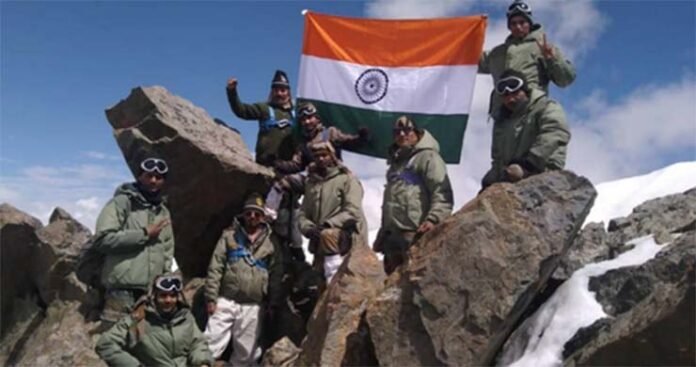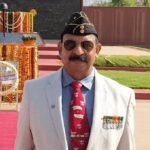The fifth round of war between India and Pakistan fought 25 years ago in the high-altitude area in the western Ladakh Ranges in the Himalayas, came to an end when Indian Prime Minister Atal Bihari Vajpayee declared a unilateral ceasefire on July 26, 1999, after 83 days of intense fighting. Prime Minister Vajpayee admired the valour and determination of Indian armed forces and declared Operation Vijay, a glorious victory, restoring the Line of Control (LOC) in Kargil Heights.
The British had ensured while drawing the Radcliffe Line in western and eastern India at the time of lowering the Union Jack on Red Fort and declaring Pakistan as a separate nation out of India in August 1947 that the Indian subcontinent remains a conflict zone forever.
The first round of war began in September 1947 when Razakars in massive strength, supported and headed by Pakistani military officers, advanced in rogue convoys on the Muzafferabad-Baramula-Srinagar axis displaying an orgy of violence, rape, loot and murder of locals. The war lasted for a full year. As the Indian forces were in the process of gradually restoring lost territories, Prime Minister Jawahar Lal Nehru rushed to the UN in panic and a ceasefire was announced. The Ceasefire Line was drawn under UN observers, and India lost 78,114 sq km area to newly-created Pakistan although Srinagar was saved. A new term – Pakistan Occupied Kashmir (P0K) – was coined.
The second round was initiated by Pakistan in September 1965 when Lal Bahadur Shastri was the Prime Minister. India was winning as the Indian troops had almost reached Lahore. India accepted the USSR-mediated ceasefire and had to return nearly 1920 sq km area, including strategic Haji Pir Pass, at the Tashkent Summit. Prime Minister Shastri died in Tashkent under mysterious circumstances.
The third round was a knockout blow to Pakistan in 1971. A new nation Bangladesh was born and East Pakistan ceased to exist, and 90,000 Pakistani troops surrendered.
The fourth round was fought in the world’s highest battlefield in 1984 when the Indian troops launched Operation Meghdoot pre-empting Pakistan’s intentions and occupied 5000 sq km of the entire Siachen Glacier and Soltoro Ridge. Pak troops suffered heavy casualties.
Kargil War, the fifth round, was conceived in 1987 and executed in 1999 by Pak Army Chief General Parvez Musharaf to take revenge for the Siachen debacle during which he was a brigade commander and had witnessed the massacre of his SSG troops. The peace process was initiated in February 1999 by Prime Minister Vajpayee and positively responded to by Pak PM Nawaz Sharif. Vajpayee travelled by Sadbhavna Bus to Lahore on February 19, 1999, along with the celebrated civil delegation including Dev Anand, Satish Gujral, Javed Akhtar, Kuldeep Nayar, Kapil Dev, and Shatrughan Sinha.
General Parvej Musharaf did not attend the function and the Pakistani troops were in the process of intrusion into Kargil Heights defying the orders of his own Prime Minister. Indian troops defending the Kargil Dras sector entered winter mode in December 1998, vacating the avalanche-prone snowbound dominating heights.
Operation Badr (meaning full moon in Arabic), the brainchild of General Parvez Musharaf, was already underway when the Lahore Declaration was signed between the two prime ministers on February 21, 1999. It was based on ‘Koh Paima’, a warfare strategy adopted by Napolean Bonapart in many wars, meaning infiltrating fast from narrow points and spreading fast in the rear of frontline enemy troops. The top secret plan was known to Lieutenant General Aziz Khan, Chief of Staff, Lt Gen Mahmud Ahmed (10 Corps commander) and Major Gen Javed Hasan, the force commander of the Northern Area FCNA (Division level force comprising four brigades). The force had ten Northern Light battalions (NLI) composed of local mountain tribes, Azad Kashmir battalions and the Special Service Group.
Three intrusion task forces were formed to covertly cross LOC and occupy strategic heights in the western Ladakh range. The first Task Force (TF 1) was to be pushed into the Dras/Mushkoh subsector composed of 6 NLI, 12 NLI and 3 companies of Special Service Group. The second group (TF 2) was earmarked for the Kaksar subsector, consisting of 4, 13 NLI and affiliated troops. Task Force 3 (TF 3) was to intrude into the Batalik/Yaldor subsector including Chorbat La. TF 3 was composed of 3, 5 and 8 NLI battalions.
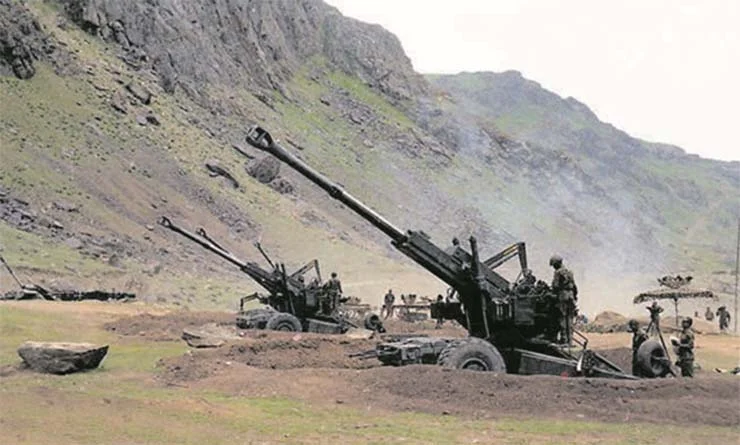
These task forces were air-maintained initially, and later well-stocked, and had logistics bases at Marpo La and Sanguti. All Pakistani troops were in traditional Salwar Kameez civil dress acting as Mujhadeens/terrorists. Surprisingly, these Pak troops remained in inclement weather, dizzy heights, and deadly blizzards, deep inside LOC for three months undetected until a few Bakarwal shepherds informed the commanders at the end of April about the presence of unknown troops above Kargil and Dras towns.
The Kargil district is today part of Union Territory of Ladakh. In 1999, Kargil Heights were part of Jammu Kashmir state, located in Ladakh ranges and was the responsibility of the Chinar Corps, under the jurisdiction of the Northern Command of the Indian Army. The National Highway (NH 1) connecting Srinagar to Leh passes through Sonamarg, Baltal, Zoji La Pass, Ghumri, Dras, Kargil, the Lochum bridge on Indus, and Nimmu in this zone. NH 1 is the lifeline for the Leh garrison and logistics support of troops deployed in Eastern Ladakh. Dras and Kargil Heights are overlooking NH 1 and if occupied by enemy Gun Observation posts (OPs), can monitor the movement of convoys and can play havoc with accurate Enemy Artillery shelling.
The Kargil district is today part of Union Territory of Ladakh. In 1999, Kargil Heights were part of Jammu Kashmir state, located in Ladakh ranges and was the responsibility of the Chinar Corps, under the jurisdiction of the Northern Command of the Indian Army.
The fog of uncertainty was cleared by the first week of May 1999. General Krishan Pal, the Chinar Corps cdr, gave his final assessment to Army commander Lt General H M Khanna that it was not a militant intrusion but regular troops consisting of Division minus of Pak Army with Arty support occupying Ladakh range from Mushkoh Dras to Yaldar in 3 pockets. No doubt it was an intelligence failure but as the situation was clear, two divisions were inducted in the war zone. It was the fastest-ever mobilisation. During the initial reconnaissance stage, three patrols of 3 Punjab were sent to Bunji to confirm enemy presence. A patrol led by Capt Saurabh Kalia, 4 JAT, near Bajrang post was taken prisoner on May 3 in the Kaksar subsector and later killed brutally.
Indian Army swung into action. The 8 Mountain Division under Maj Gen Mohinder Puri moved to the Kargil War zone. 56 Mountain Brigade assumed control of the Dras/Kargil subsector on May 16. 79 Mtn Brigade inducted in Muskoh. The response of the Indian troops was ferocious. General VPS Malik reached Kargil on May 18 and boosted the morale of Indian troops involved in the battle. The government sanctioned the use of the Indian Air Force on May 26. The IAF launched Operation Safed Sagar with seven combat squadrons and one helicopter sqn. Two fighters and one modified MI 17 gunship were lost to enemy fire. Later, Mirage 2000 ruled the sky and inflicted heavy destruction on enemy assets. Five regiments of 155mm Bofors guns reached the war zone and demolished enemy fortifications. The major victory was achieved by 2 Rajputana Rifles of 56 Brigade, when they captured Tololing (Point 4590) on June 13, 1999. Point 5140, another important height, was retaken by 13 Jammu Kashmir Rifles on June 20. 1 Naga took Black Tooth and Rocky Knob on June 22, Point 4700 (18 Garhwal) and 3 Pimples (2 Raj Rifles) were recaptured on June 29, 1999. 192 Brigade was also moved to Dras. 18 Grenadiers under 192 Brigade hoisted the Tricolour on Tiger Hill after prolonged ferocious close-quarter combat on July 4 breaking the spine of the Pakistani Army. The last strong bastion of Point 4875 (Batra Top) was taken by 13 JAK and other units of 79 Mountain Brigade on July 5. The Batalik subsector was the responsibility of the 70 Infantry Brigade under the Trishul Division. Kalubar- Stagba Ridgeline was cleared by 1/11 GR and 22 Grenadiers by July 6/7. 121 Infantry was tackling the Kaksar subsector and had suffered heavy casualties but had reached LOC. The victory chariot started steamrolling crushing enemy defences towards the LOC.
Pak PM Nawaz Sharif rushed to the USA to request the US president to speak to the Indian PM for an immediate ceasefire. The same day, the Muskoh and Dras area was recaptured and cleared. From July 12 to 18, the withdrawal of Pakistani troops was permitted. Zulu Spur held on till last, was taken by 192 Brigades on July 24. The western Ladakh range was cleared and the sanctity of LOC was restored. On July 26, 1999, the Indian PM declared that Operation Vijay was over and India achieved its objective by recapturing the entire territory. The cost of victory was high as 22 gallant officers, 21 JCOs and 452 brave soldiers made the supreme sacrifice. Pakistan also suffered heavy casualties and lost almost 1200 soldiers. Kargil War, the fifth round was over. The Himalayas witnessed silently how yet another assault on India was repulsed by gallant Indian soldiers.
There are many war heroes of the Kargil War, and some valour stories are retold to motivate the young generation.
Captain Vikram Batra (13 JAK) Param Vir Chakra (Posthumous)
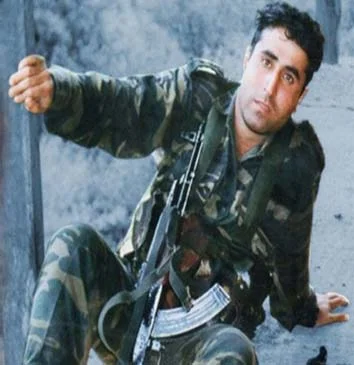
Known as SherShah in the Kargil War, Captain Vikram Batra was commissioned into 13 Jammu Kashmir Rifles in December 1997. The officer was born in Palampur, Himachal Pradesh. His father Girdhari Lal was a principal at the Local Government School and his mother Kamalkanta was also a teacher. He joined the Indian Military Academy (Manekshaw Battalion) in June 1996 as a Gentlemen cadet and passed out after 18 months of rigorous training as a lieutenant.
On June 5, 1999, 13 JAK Rifles got orders to move to the Dras sector in Western Ladakh for Operation Vijay. The Pakistan troops had crossed the LOC and firmly entrenched on mountain tops of the Ladakh Range, causing heavy casualties on Indian forward troops and bringing heavy Artillery fire on the Srinagar-Leh National Highway.
The battalion was tasked to regain Point 5140 by the 56 Brigade commander on June 18, and 13 JAK reached the forward assembly area, and D-day was fixed as June 19.
Captain Vikram Batra volunteered to lead the attack. He killed four Pak soldiers in hand-to-hand combat and his team captured the feature 5140 on June 20 early morning after a fierce battle with some casualties. All 7 Sangars were cleared. It was a remarkable achievement for 13 JAK and the Indian Army. The battalion was reverted to Ghumri for a much-needed break. Vikram was promoted to Captain in the Field.
The 13 JAK was given a new task under the 79 Mountain Brigade on July 1. The objective was now in neighbouring Mushkoh valley. There was a stronghold at Point 4875, which was a dominant height and overlooked almost 30 km of NH stretch from Mogulpura to Dras, causing heavy casualties on convoys. The feature had a steep climb. The CO ordered immediate action as it was another dominant peak on LOC and had to be captured.
Two companies went for assault with two in reserve. Vikram was the firebase commander. When the two companies were pinned down, he volunteered to take a team from a different direction. The CO initially resisted, but Vikram Batra finally convinced him. Vikram led the assault on the Target Peak 4875. His team cleared three sangars but during the fourth sangar assault, his buddy was badly injured. He pulled him behind a boulder safely and continued the assault.
Once exposed, he was badly hit by a volley of Light Machine Gun. He crawled to the bunker, profusely bleeding, and lobbed a grenade. The last sangar was silenced and following troops captured Point 4875. Indian Tricolor was placed on top. LOC was restored in the Muskoh subsector.
Col Joe renamed Point 4875 as ‘Batra Top’. Capt Vikram Batra was called the Hero of the Kargil War. He was awarded Param Vir Chakra posthumously. His farewell words to his friend were, ”Either l will come back after hoisting the Triclour, or will come back wrapped in it, but l will come back for sure.”
Col Joe renamed Point 4875 as ‘Batra Top’. Capt Vikram Batra was called the Hero of the Kargil War. He was awarded Param Vir Chakra posthumously. His farewell words to his friend were, ”Either l will come back after hoisting the Triclour, or will come back wrapped in it, but l will come back for sure”
Lieutenant Manoj Kumar Pandey (1/11 Gorkha Rifles) PVC Posthumous
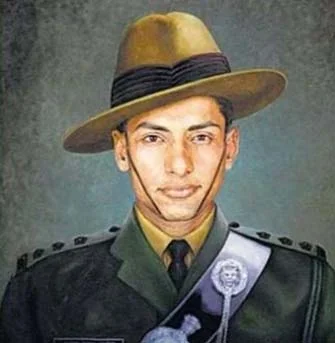
During his Service Selection Board interview, Manoj Pandey was asked by the Presiding Officer why he wanted to join the Army, he firmly replied, ‘to win Param Vir Chakra’, and true to his words he won PVC in the Kargil War but posthumously. Lt Manoj Pandey was born in the Rudha village, Sitapur district, UP, in a middle-class family. His father’s name was Gopi Chand Pandey and his mother’s Mohini Pandey.
He joined the National Defence Academy and later passed out from IMA. He was commissioned into 1/11 Gorkha Rifles in 1998.
1/11 GR had completed its Siachen Glacier tenure and was preparing to move to Pune on a much-deserved peace posting, when the intrusion was detected in early May 1999 and the Unit was ordered to move to Western Ladakh and was allotted to Batalik/Yaldar Sector under officiating CO Lt Col Amul Asthana. The unit was allotted to the 70 Mountain Brigade. The enemy was firmly deployed on the four fingers Jabuar, Kukarthang, Kalubar and Charubar, and inflicting heavy casualties on climbing troops. Col Lalit Rai took over on June 2. The task given was to capture Kalubar Top and Kalubar South on July 2, 1999. There was heavy fire coming from Bunker Ridge to its East. A company went from Frontal Attack. B Company under Major Christopher Correya was detailed to go from east to clear and silence Bunker Ridge and on to Kalubar Top. He detailed Lt Manoj Pandey and his assault team to clear the Bunker Ridge. There were only a few boulders for cover. No move could take place in the day. They identified two bunkers and later discovered four more sangars. The assault was launched after midnight under cover of darkness. Lt Manoj bravely approached Sanger along with his buddy Hav Bheem Bahadur and killed enemy soldiers with khukri. They cleared another four flanking sangars also and captured Bunker Ridge.
Manoj sustained multiple bullet wounds when he was hit by an MMG burst from the last bunker. He continued firing and motivating assaulting troops. The Gorkhas beheaded the rest of the enemy troops. The battle was over. Kalubar Top and South were captured but Lt Manoj Pandey had made the supreme sacrifice for the safety of his motherland. Brave never Die. For the gallant action, unparalleled bravery to capture Kalubar Hill and restoration of the area up to LOC, Lt Manoj Pandey was awarded Param Vir Chakra.
Grenadier Yogender Singh Yadav (18 Gren) Param Vir chakra
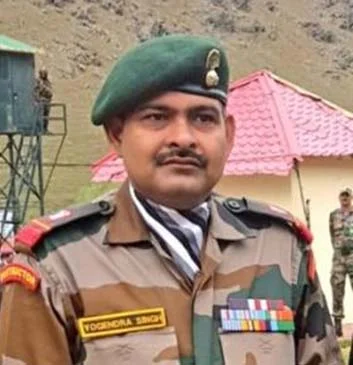
During an interview with Doordarshan, Yogender Singh Yadav said, “A soldier has a selfless devotion to the motherland and his regiment and for the integrity of nation and safety of his fellow soldiers one does not hesitate to risk his life.” You cannot miss these live heroes at the forefront of the Republic Day Parade on January 26. Grenadier Yogender Singh was born in Bulundshahr, UP. His proud father Karan Singh Yadav is a farmer and his mother’s name is Santara Devi. He was just 19 years old when he was bestowed upon the highest gallantry award.
The 18 Grenadiers moved to the Kargil Dras sector in early June 1999 and actively participated in the battle of Tololing under 56 Brigade on June 10-12, 1999. It suffered very heavy casualties. The 18 Grenadiers was shifted to the 192 Brigade and tasked to capture Tiger Hill, a dominant height, on July 2, 1999. The height of the feature was 16,800 feet, with near zero temp even in the summer. The assault was launched on July 3. Gren Yogender Yadav was the leading scout of the Commando platoon. The commandos took the rear cliff approach. They climbed with the help of slithering rope. He lobbed the grenade from the rear and killed all in the bunker. While neutralising the second sangar, he was hit by several bullets, he continued crawling to the last active post. The Commando platoon was by now reduced to half. There were dead and injured all over. Eventually, he killed four Pakistani soldiers with another grenade. He was badly wounded and crawled back to the firm base and informed CO about the locations of the enemy at Tiger Hill. The unit launched an assault based on his inputs and captured Tiger Hill’s top.
Gren Yogender singh Yadav was evacuated by Air to the Army Hospital in Delhi, critically injured but survived. For conspicuous gallantry in the face of the enemy, steel determination, and an important role in the capture of Tiger Hill, he was awarded with Param Vir Chakra. He retired in 2021 and is an Honorary Captain.
Kalubar Top and South were captured but Lt Manoj Pandey had made the supreme sacrifice for the safety of his motherland. Brave never Die. For the gallant action, unparalleled bravery to capture Kalubar Hill and restoration of the area up to LOC, Lt Manoj Pandey was awarded Param Vir Chakra
Rifleman Sanjay Kumar (13 JAK Rif) Param Vir Chakra
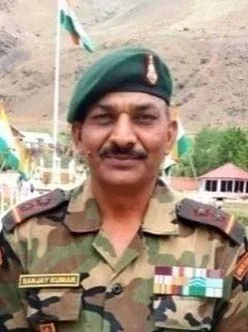
Sanjay Kumar was enrolled in the 13 Jammu Kashmir Rifles in 1996. He was born in March 1976 at Village Kaloi Bakain in Bilaspur district, Himachal Pradesh. His father Durga Ram and mother Bhag Devi used to fondly call him Sanju. He was determined to join the Army since his school days and was a good long-distance runner. The battalion under Lt Col Y K Joshi had moved to Ghumri and later to the Muskoh sub-sector in the Dras area. The forward companies had captured Point 5140 led by Capt Vikram Batra but Point 4875 was still occupied and taking a heavy toll on our troops. On July 5, 1999, as the initial assault had stalled at 4 am, the depth companies were launched. Area Flat top was interfering with heavy automatic fire from Universal Machine Gun (UMGs) and Grenade launchers. Rifleman Sanjay Kumar along with his buddy were the leading scouts. The first Sangar opened up with heavy fire. The assaulting column was pinned down. Sanjay told his buddy to give covering fire and charged at the post. He was hit in the shoulder and fell down but continued crawling and entered the sangar from the rear and killed in close combat. The fire continued from the Depth locality. The company commander advised him to be evacuated as he was bleeding due to gunshot wounds. Rifleman Sanjay rushed to the next sangar, which surprised the enemy. They abandoned the Depth UMG post. By now, Sanjay has finished his ammunition. He picked up the enemy’s abandoned Machine gun and shot dead the fleeing four Northern Light Infantry soldiers. Area Fiat Top was captured, which helped in the capture of Point 4875. For displaying devotion to duty, conspicuous courage and gallant action in the face of the enemy, Rifleman, now Subedar Major Sanjay Kumar was honoured by the President with Param Vir chakra. He is posted at NDA.
The following heroes received Maha Vir Chakras, the second-highest gallantry award during the Kargil operations. Major Rajesh Adhikari (P) 18 Gren, Tololing Ops, Lt Balwan Singh (18 Gren) Tiger Hill Ops, Capt Anuj Nair (P) 17 JAT Pimple complex, Muskoh, Major Vivek Gupta (P) Tololing, Major P Acharya (P) Knoll, Capt N Kenguruze (P) Knoll, Naik Digendra Kumar, Tololing (All four awardees from 2 Rajputana Rifles), Sepoy Imli Akum Ao, 2 Naga, Muskoh Point 4875. Lt KC Nogrung (P) 12 JAK Light Infantry Point 4812 Yaldar sector, and Capt Gurjinder Singh (Faulad post). Squadron Leader Ajay Ahuja of IAF of Golden Arrow sqn was awarded Veer Chakra posthumously
The ten infantry battalions awarded battle honour and special citations from the Chief of Army Staff and titled ‘Bravest of the Brave’ included the 8 Sikh, 18 Grenadiers, 17 Jat, 18 Garhwal, 2 Rajputana Rifles, 13 Jammu Kashmir Rifle, 1/11 Gorkha Rifles. 2 Naga, 1 Bihar, 12 Jammu Kashmir Rifles, 141 Field, 197 Field, 108 Medium Arty Regt were also awarded COAS Unit citations. Many unsung soldiers made the supreme sacrifice or were severely wounded for the safety and integrity of the nation. The entire country stood united beyond religion, caste, creed and party lines. We salute our war heroes especially those who did not come back.
“Do not Lament The death of a warrior in battlefield, they are honoured in Heaven”
-The writer is an Indian Army veteran and a defence analyst. He has keen interest in Geo-strategic affairs and writes regularly on internal and external affairs issues related to India and neighbours. The views expressed are personal and do not necessarily reflect the views of Raksha Anirveda
-The writer is an Indian Army veteran and a defence analyst. He has keen interest in Geo-strategic affairs and writes regularly on internal and external affairs issues related to India and neighbours. The views expressed are personal and do not necessarily reflect the views of Raksha Anirveda

